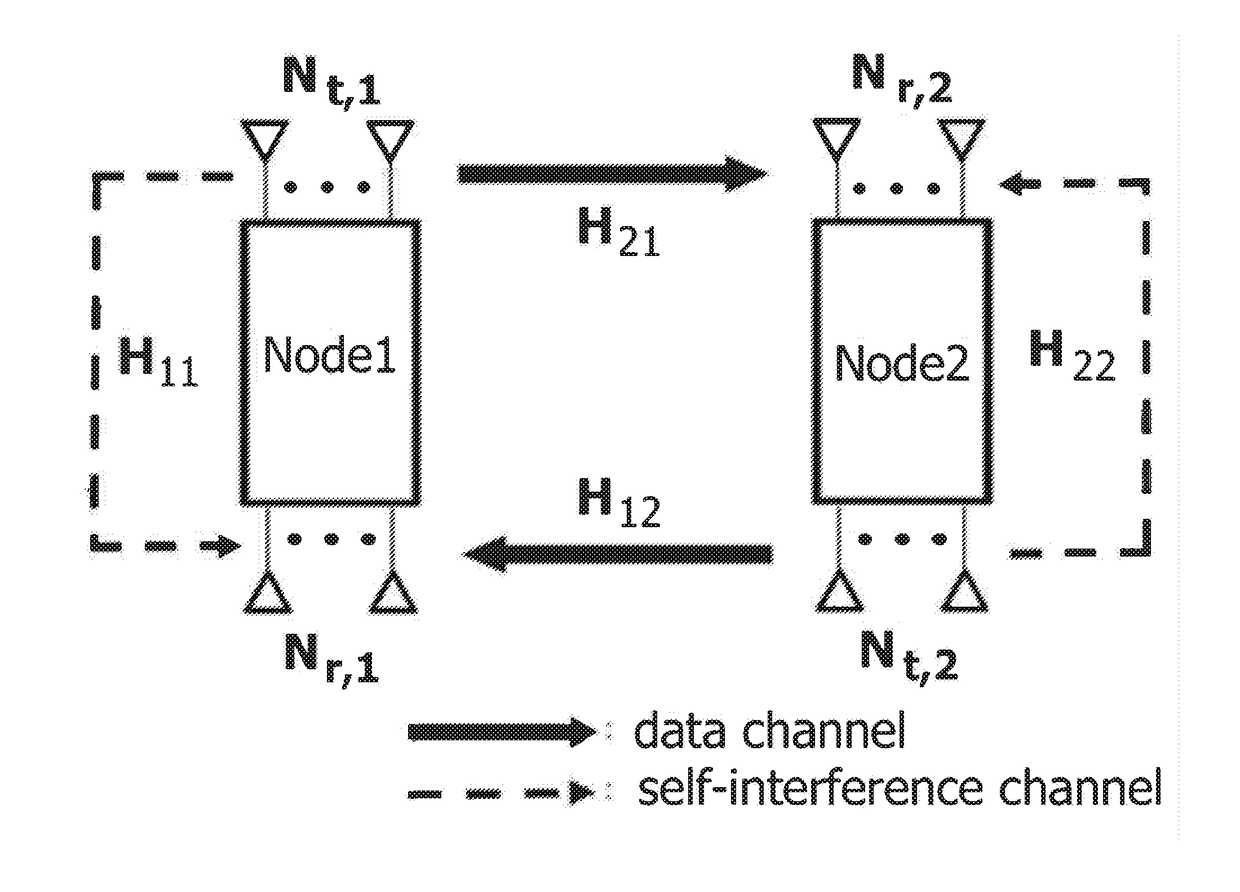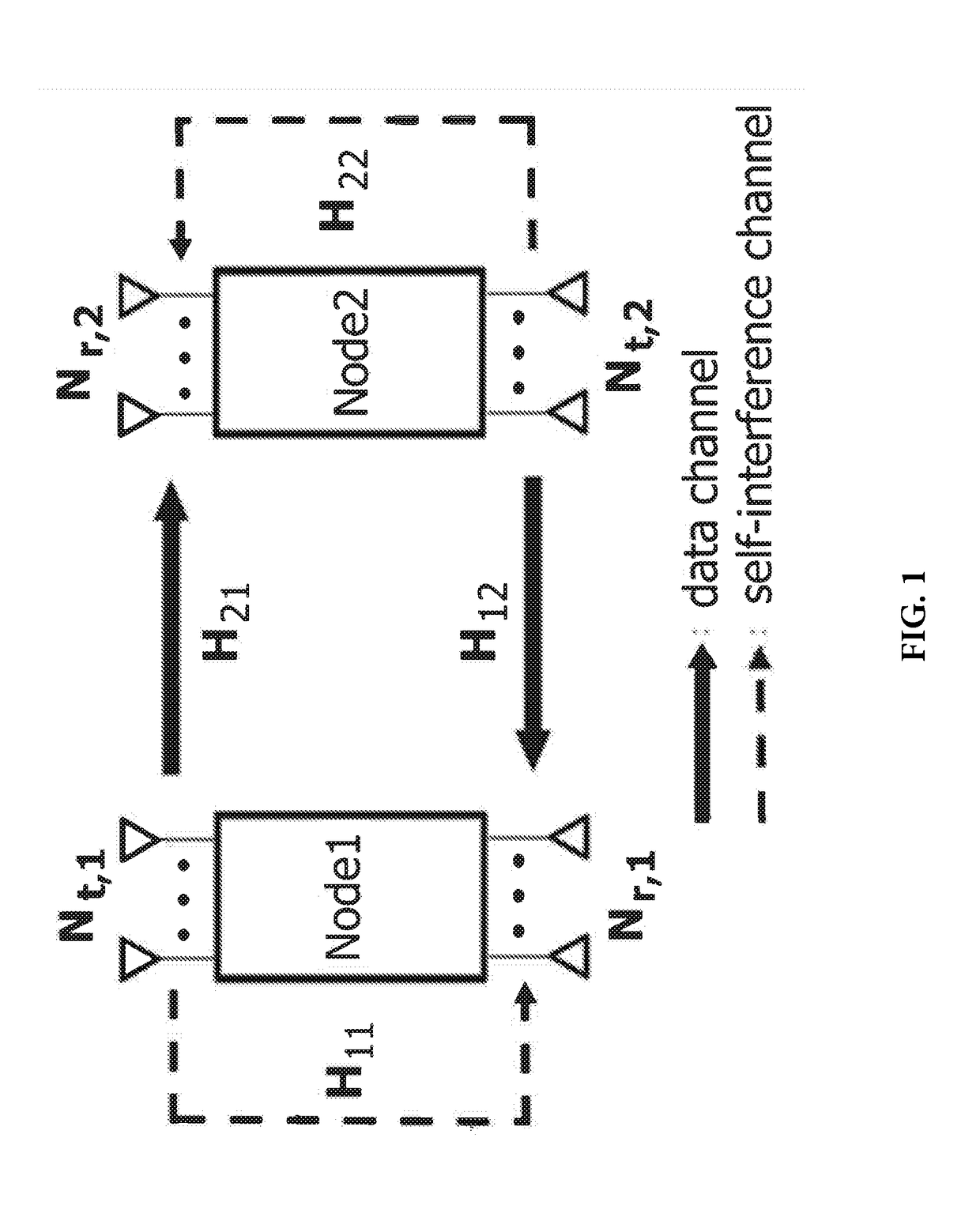Method for selecting antennas in full-duplex MIMO system
a full-duplex, mimo system technology, applied in the direction of diversity/multi-antenna system, spatial transmit diversity, electrical apparatus, etc., can solve the problems of excessive complexity and strong self-interference and achieve the effect of reducing the complexity of the mimo system
- Summary
- Abstract
- Description
- Claims
- Application Information
AI Technical Summary
Benefits of technology
Problems solved by technology
Method used
Image
Examples
Embodiment Construction
[0020]A method for selecting antennas in a full-duplex MIMO system associated with an embodiment of the present invention is described below in more detail with reference to the accompanying drawings.
[0021]In the present specification, an expression used in the singular encompasses the expression of the plural, unless it has a clearly different meaning in the context. In the present specification, terms such as “comprising” or “including,” etc., should not be interpreted as meaning that all of the elements or steps are necessarily included. That is, some of the elements or steps may not be included, while other additional elements or steps may be further included.
[0022]FIG. 1 is a flow diagram illustrating a full-duplex MIMO system associated with an embodiment of the invention. The example set forth below considers a full-duplex MIMO system. In a full-duplex MIMO system, two nodes, referred to herein as a first node (or Node 1) and a second node (or Node 2), can transmit and receiv...
PUM
 Login to View More
Login to View More Abstract
Description
Claims
Application Information
 Login to View More
Login to View More - R&D
- Intellectual Property
- Life Sciences
- Materials
- Tech Scout
- Unparalleled Data Quality
- Higher Quality Content
- 60% Fewer Hallucinations
Browse by: Latest US Patents, China's latest patents, Technical Efficacy Thesaurus, Application Domain, Technology Topic, Popular Technical Reports.
© 2025 PatSnap. All rights reserved.Legal|Privacy policy|Modern Slavery Act Transparency Statement|Sitemap|About US| Contact US: help@patsnap.com



